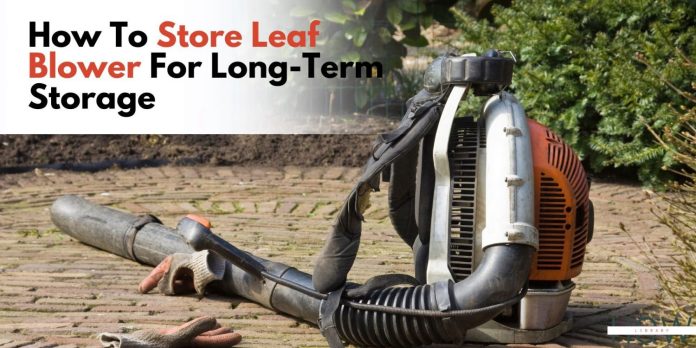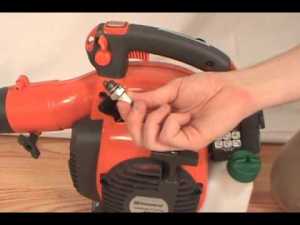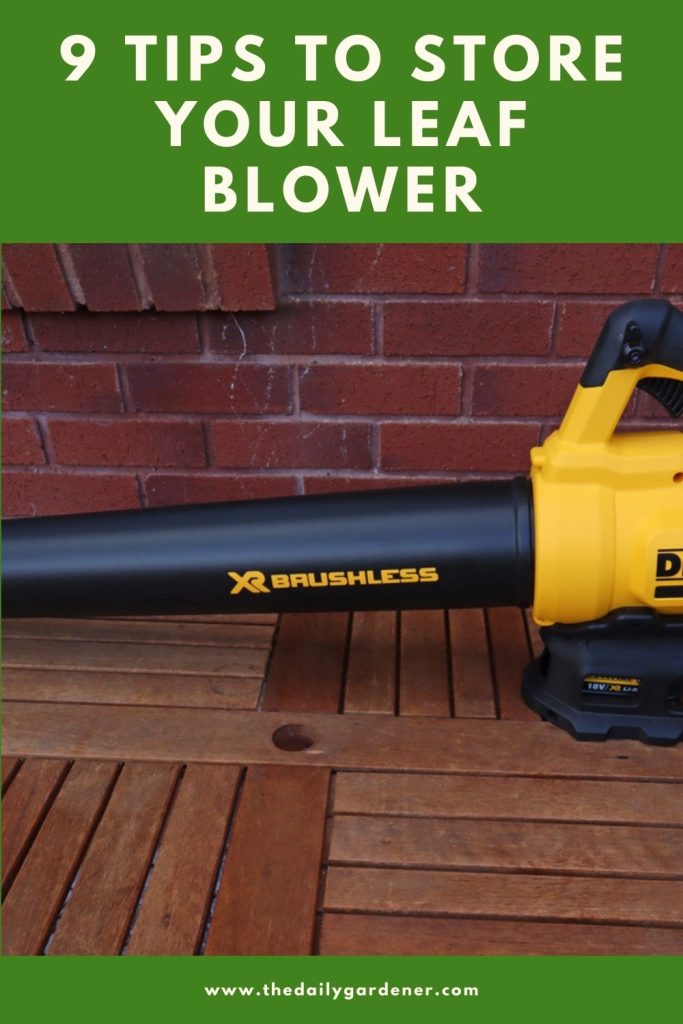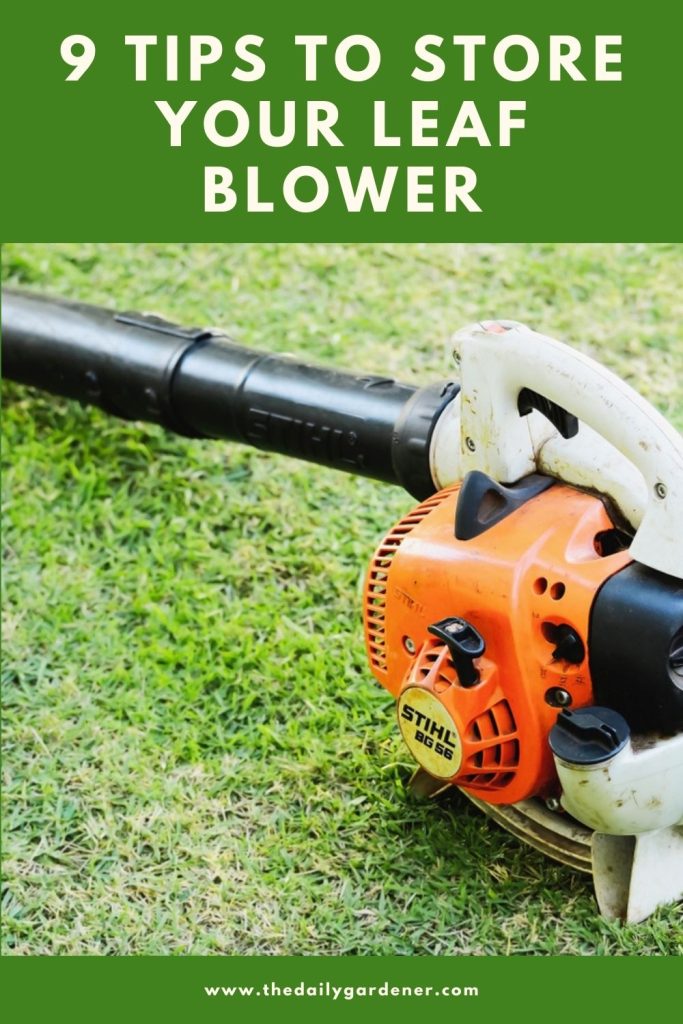Now that autumn has arrived, you may wonder what to do with your trusty leaf blower during the off-season. Don’t worry; we’ve got you covered!
Storing your leaf blower properly can extend its lifespan and ensure it’s ready to tackle those pesky leaves next year.
So, in this article, we’ll walk you through some simple steps to store your leaf blower safely and efficiently.
With our handy tips, you’ll be well-prepared for a seamless transition when the next leaf-choked season rolls around.
Choosing the right location for storage
Choosing the right location is crucial when storing your leaf blower during the off-season. You’ll want to find a place that is safe, dry, and easily accessible. Indoor storage options are ideal for protecting your leaf blower from elements like rain and extreme temperatures. Consider using your garage, basement, or a designated storage room in your home. If indoor storage is not possible, outdoor storage can be a viable option. However, there are some additional considerations to keep in mind.
Indoor storage options
If you have the luxury of indoor storage space, take advantage of it. Indoor storage offers the best protection for your leaf blower, preventing it from being exposed to harsh weather conditions that can cause damage.
Consider storing your leaf blower in your garage, basement, or a dedicated storage room. Ensure the area is clean and well-organized, allowing easy access to your leaf blower when needed. A sturdy shelf or wall mount can be convenient and keep your blower off the ground.
Outdoor storage considerations
If indoor storage is not an option, outdoor storage can still be suitable with a few considerations. First and foremost, choose a location that offers some protection from the elements.
Look for a covered area, such as a shed or carport, to shield your leaf blower from rain, snow, and direct sunlight. Investing in a durable and weatherproof cover for your blower is essential to protect it from moisture and debris. Additionally, consider securing your outdoor storage area with a lock to prevent theft.
Preparing the leaf blower for storage
Before storing your leaf blower for an extended period, it’s crucial to prepare it to ensure it remains in good condition properly. Here are some essential steps to follow when preparing your leaf blower for storage.
Clean the leaf blower.
Start by giving your leaf blower a thorough cleaning. Use a soft brush or cloth to remove any dirt, leaves, or debris that may have accumulated on the blower—attention to the air intake vents, fan blades, and nozzle. A clean blower helps prevent damage and ensures better performance when you need to use it again.
Remove fuel and oil.
Next, remove any remaining fuel and oil from the leaf blower. Storing your blower with fuel and oil can lead to clogs, engine damage and even pose a safety risk. Refer to your leaf blower’s user manual for instructions on draining the fuel and oil. Dispose of the fuel and oil properly according to local regulations or recycle them if possible.
Inspect and replace parts.
While cleaning your leaf blower, take the time to do a thorough inspection and check for any worn or damaged parts. Look for wear on the air filter, spark plug, and fuel lines. Replace any parts that show signs of wear or damage to avoid potential performance issues when you need to use the blower again.
Tighten loose fasteners
Before storing your leaf blower, ensure all the fasteners, such as screws and bolts, are secure and tightened. Vibration during use can cause fasteners to become loose over time, leading to unnecessary wear and tear. A quick check and tightening of fasteners can help prevent problems when using the blower next.
Storing the leaf blower properly
Now that you’ve prepared your leaf blower for storage, it’s time to focus on storing it properly to ensure it stays in excellent condition. Here are a few key factors to consider when storing your leaf blower.
Safe storage practices
Safety should always be a priority whether you’re storing your leaf blower indoors or outdoors. Ensure that the storage area is well-ventilated to prevent the buildup of fumes from any remaining fuel or oil. Keep the blower out of reach of children and pets, and store it where it won’t pose a tripping hazard.
Proper container for fuel
If you choose to store your leaf blower with fuel (as some manufacturers recommend), use an approved fuel container. Avoid using containers not explicitly designed for fuel storage, as they may not be as secure and may increase the risk of leaks. A fuel container with a tight-fitting cap and durable construction is essential to prevent spills and accidents.
Battery maintenance for cordless blowers
For cordless leaf blowers powered by batteries, proper battery maintenance is crucial for their longevity. Before storage, check the manufacturer’s guidelines for storing the battery. Some recommendations may include partially charging the battery or removing it from the blower entirely. Follow these guidelines to ensure your battery remains in optimal condition during the off-season.
Tips for long-term storage
If you plan on storing your leaf blower for an extended period, following these tips can help ensure that it remains in excellent condition until you need to use it again.
Use a fuel stabilizer.
If you store your leaf blower with fuel, consider using a fuel stabilizer. Adding a fuel stabilizer to the fuel tank can help prevent the fuel from deteriorating and clogging the fuel system. Follow the manufacturer’s instructions for the correct amount of stabilizer, and run the blower for a few minutes to distribute the treated fuel throughout the system.
Maintain proper air circulation.
Proper air circulation is essential when storing your leaf blower. Avoid sealing it in an airtight container or covering it with plastic wrap, as this can trap moisture and lead to rust or other damage. Instead, use a breathable cover designed explicitly for leaf blowers, allowing air to circulate while protecting the blower from dust and debris.
Avoid moisture buildup
Moisture can cause significant damage to your leaf blower, especially if it’s stored in a damp area. To prevent moisture buildup, ensure the storage area is dry and well-ventilated. Use moisture-absorbing products like desiccant packs or silica gel to keep the humidity level low. These can be placed near the blower or inside the storage container to help absorb excess moisture.
Precautions and safety measures
Ensuring the safety of your leaf blower and the surrounding environment is crucial, even during storage. Here are some precautions and safety measures to keep in mind.
Ensure proper ventilation
As mentioned before, proper ventilation is vital when storing your leaf blower. Gas-powered blowers may emit potentially harmful fumes, even when not in use. Ensure the storage area is adequately ventilated to prevent the buildup of fumes and reduce the risk of fire or carbon monoxide poisoning.
Keep away from flammable materials.
When selecting a storage location for your leaf blower, choose a clear area of flammable materials. Gasoline fumes and oil residue can be highly flammable, so keeping the blower away from potential ignition sources, such as open flames or electrical outlets, is essential.
Avoid extreme temperature exposure.
Extreme temperatures can affect the performance and lifespan of your leaf blower, even during storage. Avoid storing the blower in areas that experience excessive heat or cold, such as near heating appliances or outside in extreme weather conditions. Optimal storage temperatures typically range from 40 to 70 degrees Fahrenheit (4 to 21 degrees Celsius).
Regular maintenance during the off-season
Although your leaf blower may not be in active use during the off-season, it’s still essential to perform regular maintenance to ensure it remains in top shape. Incorporate these maintenance tasks into your routine to keep your leaf blower functioning optimally.
Routine inspections
Periodically inspect your leaf blower for wear, damage, or corrosion during storage. Check the air filter, fuel lines, and spark plugs for any issues. It’s easier to address minor problems before they escalate into significant performance issues or damage.
Cleaning and lubrication
Even when not in use, dirt, dust, and debris can accumulate on your leaf blower. Regularly clean the blower and remove any buildup to prevent clogs and damage. Lubricate moving parts or hinges according to the manufacturer’s recommendations to ensure smooth operation.
Test and recharge batteries
If your leaf blower is battery-powered, periodically check the battery’s charge levels and test its functionality. Recharge the battery as needed to maintain its performance during storage. A fully charged battery is essential when it comes time to use your blower again.
Check fuel system
If you store your leaf blower with fuel, periodically inspect the fuel system for any leaks, damage, or clogging. Pay attention to the fuel lines, fuel tank, and carburetor. Address any issues promptly to prevent damage to the fuel system and ensure the blower’s optimal performance.
Common storage mistakes to avoid
To ensure your leaf blower stays in excellent condition throughout the off-season, avoiding some common storage mistakes is essential. By steering clear of these pitfalls, you’ll be able to enjoy a well-maintained blower when you need it again.
Storing fuel in the tank
Leaving fuel in the tank of your leaf blower during storage can lead to clogs, deteriorated fuel quality, and potential damage to the engine. It’s best to drain the fuel from the tank following the manufacturer’s instructions and run the blower until it stops using any remaining fuel in the system.
Leaving the blower in a dirty condition
Neglecting to clean your leaf blower before storage can result in clogged air filters, fuel lines, and other issues. Take the time to clean your blower thoroughly, removing any dirt, debris, or other contaminants that may affect its performance.
Skipping maintenance during storage
Although your leaf blower may not be in active use, it still requires regular maintenance during storage. Skipping routine inspections, cleaning, and lubrication can lead to problems when you’re ready to use the blower again. Dedicate some time to regular maintenance tasks to prevent surprises or performance issues.
Improper storage position
Storing your leaf blower in an incorrect position can lead to fuel leaks, oil spills, and other potential damages. Always follow the manufacturer’s instructions regarding the proper storage position, whether upright, horizontal or any other specific orientation.
Dealing with limited storage space
If you’re faced with limited storage space, finding creative solutions to accommodate your leaf blower is essential. Here are a few suggestions to help you maximize your available space.
Utilize wall-mounted organizers
Wall-mounted organizers can be a great space-saving solution for storing your leaf blower. Look for organizers specifically designed for power tools, as they provide secure storage options for your blower and its accessories. This saves space and keeps your blower easily accessible and off the ground.
Consider vertical storage options.
If floor space is limited, consider utilizing vertical storage options for your leaf blower. Vertical racks or hooks mounted on the wall can provide a neat, space-saving way to store your blower. Ensure the hooks or racks are strong enough to support the blower’s weight and any additional accessories you may have.
Share storage space with other tools
If you have multiple tools and limited storage options, consider sharing the space with other tools used seasonally. Look for ways to organize and stack your tools to maximize available space efficiently. Just make sure your leaf blower is stored in a way that allows easy access without moving other tools.
Extended storage for multiple seasons
If you plan to store your leaf blower for multiple seasons, you can take a few additional steps to ensure it’ll remain in good condition. These extra precautions can help protect your blower from long-term damage and keep it ready for use when needed.
Drain and replace fuel annually.
When storing your leaf blower for an extended period, it’s a good idea to drain the fuel from the tank annually. Old fuel can become stale, leading to clogs and poor engine performance. Follow the manufacturer’s instructions for draining fuel and replace it with fresh fuel when ready to use the blower again.
Inspect hoses and connections.
Over time, hoses and connections can deteriorate or become damaged, especially with extended storage periods. Before using your leaf blower again, inspect all hoses and connections for any signs of wear, cracks, or leaks. Replace any damaged parts to ensure optimal performance and prevent any safety risks.
Examine spark plugs
Spark plugs play a crucial role in the ignition process of your leaf blower. Extended storage can cause spark plugs to become fouled or corroded. Before using your leaf blower again, remove and inspect the spark plug. Clean or replace it if necessary to ensure reliable starting and optimal engine performance.
Store in a climate-controlled environment
Storing your leaf blower in a climate-controlled environment can provide protection against extreme temperatures and humidity. Extreme temperature fluctuations and excessive humidity can cause damage to the blower’s components. If you have access to a climate-controlled area, such as a basement or climate-controlled storage unit, consider storing your blower there for the best long-term preservation.
Preparing for blower use after storage
When you’re ready to start using your leaf blower after an extended storage period, performing some basic checks and maintenance tasks is crucial. This ensures your blower is appropriately working and ready to tackle your outdoor tasks.
Check for damage or wear.
Before starting your leaf blower, inspect it for any signs of damage or wear that may have occurred during storage. Look for cracked or damaged casings, loose hoses, or other visible issues. Address any problems before using the blower to prevent further damage and ensure safe operation.
Replace fuel and oil.
If you drained the fuel and oil before storage, refill them according to the manufacturer’s recommendations. Use fresh fuel and oil to ensure optimal performance. Checking and replacing the fuel and oil also allows you to inspect the fuel system for additional maintenance needs.
Perform routine maintenance checks.
Performing routine maintenance checks, such as cleaning the air filter or replacing the spark plug, is crucial before using your leaf blower after storage. These tasks help ensure that your blower is in top shape and will perform optimally when needed. Follow the manufacturer’s maintenance schedule and guidelines for the best results.
Following these steps and tips for storing your leaf blower during the off-season, you can protect your investment and ensure it remains in excellent condition. Proper preparation, maintenance, and storage practices will not only extend the lifespan of your leaf blower but also ensure its reliable performance season after season.
So, take the time to store your leaf blower correctly, and you’ll be rewarded with a well-maintained and efficient tool when tackling those leaves again.








































